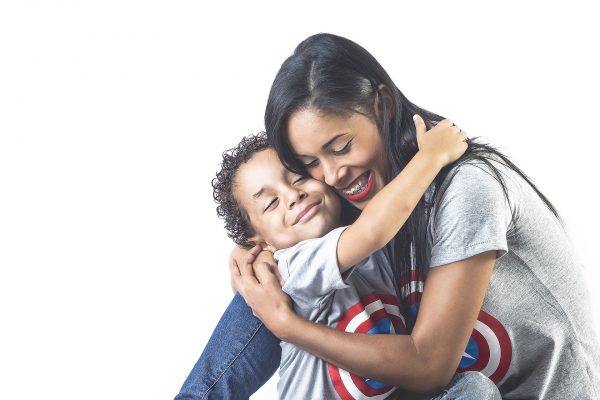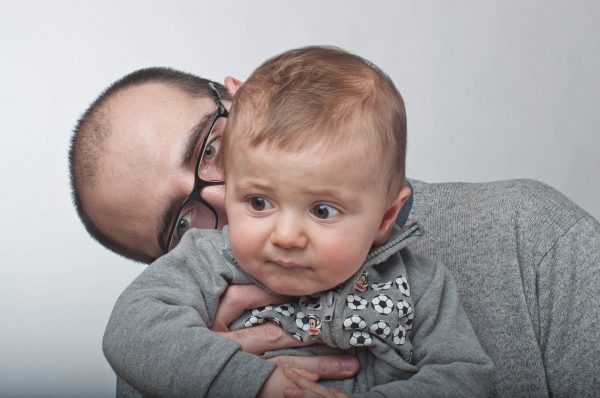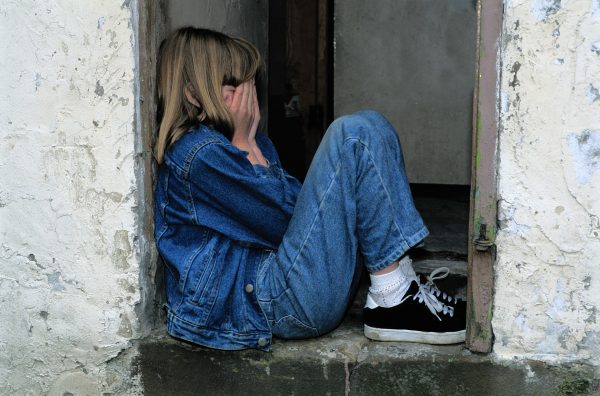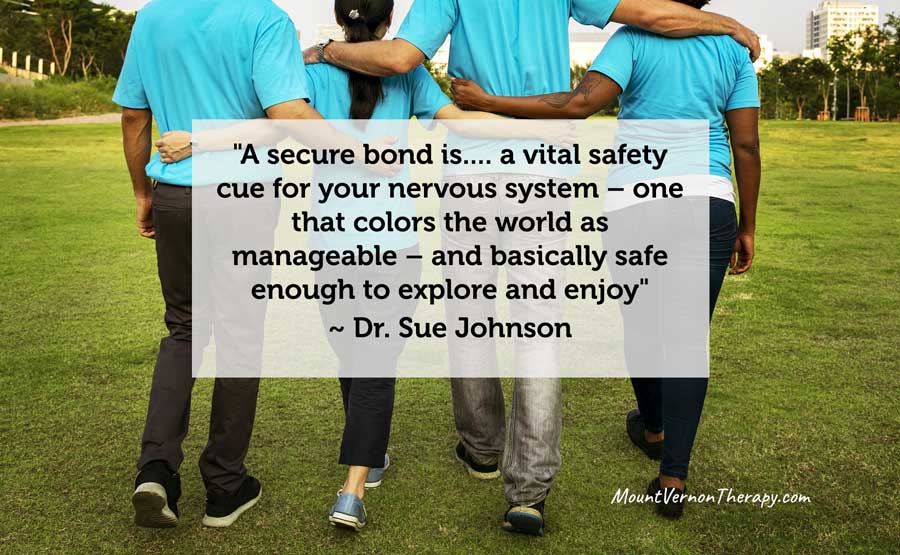Have you ever looked at a loved one’s photo and felt happy? After sharing a problem with someone who understands, did a wave of peace and calm wash over you?
You might enjoy such feelings because of a special emotional bond called secure attachment.
“A secure bond is…. a vital safety cue for your nervous system – one that colors the world as manageable – and basically safe enough to explore and enjoy,” says researcher Dr. Sue Johnson:
“Such a bond is also where we trust that a person will respond to us emotionally…. This does not mean that they will always be able to protect us or solve our problems. It means that we will not face these problems alone.”
We Are Born With the Need for Secure Love
 It’s natural to want a lasting emotional connection with another person. We have an inborn need for secure attachment. It’s vital to our sense of safety and wellbeing.
It’s natural to want a lasting emotional connection with another person. We have an inborn need for secure attachment. It’s vital to our sense of safety and wellbeing.
We start looking for someone to turn to from birth. One of the first things babies do is seek caring attention from at least one person. Researcher John Bowlby studied how infants and toddlers behave to create a bond with a caregiver (usually mom). He found that not all bonds are the same.
Bowlby observed that babies find comfort and safety with different amounts of success.
Some children feel safe and soothed most of the time. Others receive care that leaves them feeling insecure. Instead of responsive attention, they experience inconsistent, rejecting or frightening relationships.
How secure — or insecure — babies feel in their first relationship has a lot to do with how they function in relationships later as adults.
Your Adult Attachment Style Formed In Childhood
 Johnson applied Bowlby’s ideas to adult love. She found love isn’t a mystery when you learn about attachment. It’s about our quest to find a secure connection with an adult partner.
Johnson applied Bowlby’s ideas to adult love. She found love isn’t a mystery when you learn about attachment. It’s about our quest to find a secure connection with an adult partner.
Our first attachments teach us how to expect a close relationship to feel. In general, adults choose partners who trigger feelings like those they knew growing up.
Knowing about attachment styles can help you see your relationship from a new point of view. It won’t explain everything. But learning about attachment can give you powerful knowledge to help you change things for the better.
Here are brief definitions of four main attachment styles, and their influence on relationships. While your experience is unique, these patterns may help you explore how you see relationships working for you.
1) Secure Attachment

Moments of secure attachment teach your nervous system how it feels to count on a trusted partner when you are upset. You learn to find comfort in showing your needs to another person.
You discover how a trusted ally can help you make sense of your world and yourself. You find that feeling seen, heard and understood by a special person instills a deep sense of calm.
As an adult, your sense of secure attachment helps you build a partnership for mutual support. You see your relationship as a place to count on each other for comfort, and to solve problems together.
Less secure relationships teach different expectations. When a relationship isn’t secure, children tend to adopt one of three insecure attachment styles:
2) Anxious Attachment
 Anxious attachment forms when a child feels unsure of the emotional connection with the person they depend on. Sometimes the child finds comfort and assurance. Other times, the parent is tuned out, or is over-sensitive and reactive. The child can’t rely emotionally on this connection as a place to feel safe or secure.
Anxious attachment forms when a child feels unsure of the emotional connection with the person they depend on. Sometimes the child finds comfort and assurance. Other times, the parent is tuned out, or is over-sensitive and reactive. The child can’t rely emotionally on this connection as a place to feel safe or secure.
Anxious attachment in childhood can instill distressing emotional triggers in adult relationships. With anxious attachment, a person may find it hard to trust a partner. Fears of being abandoned or smothered may trigger clingy feelings or the urge to escape.
3) Avoidant Attachment
 Avoidant attachment occurs with emotional isolation. A child feels the person they turn to is unresponsive, unaware, or emotionally unavailable. A child may feel rejected when showing needs for comfort or acceptance. Physical contact isn’t offered much or isn’t soothing.
Avoidant attachment occurs with emotional isolation. A child feels the person they turn to is unresponsive, unaware, or emotionally unavailable. A child may feel rejected when showing needs for comfort or acceptance. Physical contact isn’t offered much or isn’t soothing.
These children learn to cope with emotional distance or neglect often by becoming distant themselves. They may learn to ignore their own body’s reactions related to feelings. They can seem cold in response to others’ emotional needs. Inside, they often experience the same anxiety and loneliness as anyone else. But they rarely feel okay showing it.
As an adult, a person with an avoidant style may reject the idea that a relationship is a good place to open up. They withdraw to self-soothe. Facing a partner’s emotional needs may trigger even more withdrawal and detachment. A difficult pursuit-withdraw pattern may form in the relationship.
4) Disorganized Attachment
 Disorganized attachment happens when a child experiences trauma, chaos or abuse from the same person they depend on for care. These children must learn to survive with unresolvable emotions. They must try to function while in constant distress. They may stretch logic to try to make sense of their world. They may act out with the same behavior they endure. They may believe safe emotional connection for them is impossible.
Disorganized attachment happens when a child experiences trauma, chaos or abuse from the same person they depend on for care. These children must learn to survive with unresolvable emotions. They must try to function while in constant distress. They may stretch logic to try to make sense of their world. They may act out with the same behavior they endure. They may believe safe emotional connection for them is impossible.
Adults with disorganized attachment may feel confused, disoriented and conflicted in relationships. Problems in the relationship may trigger more emotional chaos, fright-driven or frightening behavior.
Secure Attachment is Learnable
 If you think you have an anxious, avoidant or disorganized attachment style, you may be worried. The good news is that people with any style can learn about secure attachment and how to build it.
If you think you have an anxious, avoidant or disorganized attachment style, you may be worried. The good news is that people with any style can learn about secure attachment and how to build it.
It’s not your fault if you don’t know yet what a secure relationship feels like.
Your need for secure love is something you are born with. It’s always with you. It can guide you and your relationships in healthier directions as you become more aware of your needs and how to honor them.
Much of the work we do in therapy with individuals and couples is to help people step back from patterns that aren’t serving them well. We talk about recognizing and responding to emotions in new ways, so they can lead in healthier directions. It’s like rewriting your operating manual for relationships.
Learning to heal the pain and trauma of insecure relationships can be a difficult and challenging journey. That is where the support and guidance of a professional therapist can help a lot
Through therapy, you may discover how being vulnerable also opens doors to connection. Vulnerability helps make your needs visible. When you’re with a partner who steps up to see your truth, you may have the basis for secure connection.
You can learn how to be open about what you need with a partner who is accepting, responsive, and engaged. You can learn to recognize when your relationship works as a secure base. It can become a haven and a resource for you both. It’s where you feel safe, secure, known, and confident you belong. That’s an experience worth working for.
We are here for you:
Trained, professional couples and individual counseling in Alexandria, Virginia:


